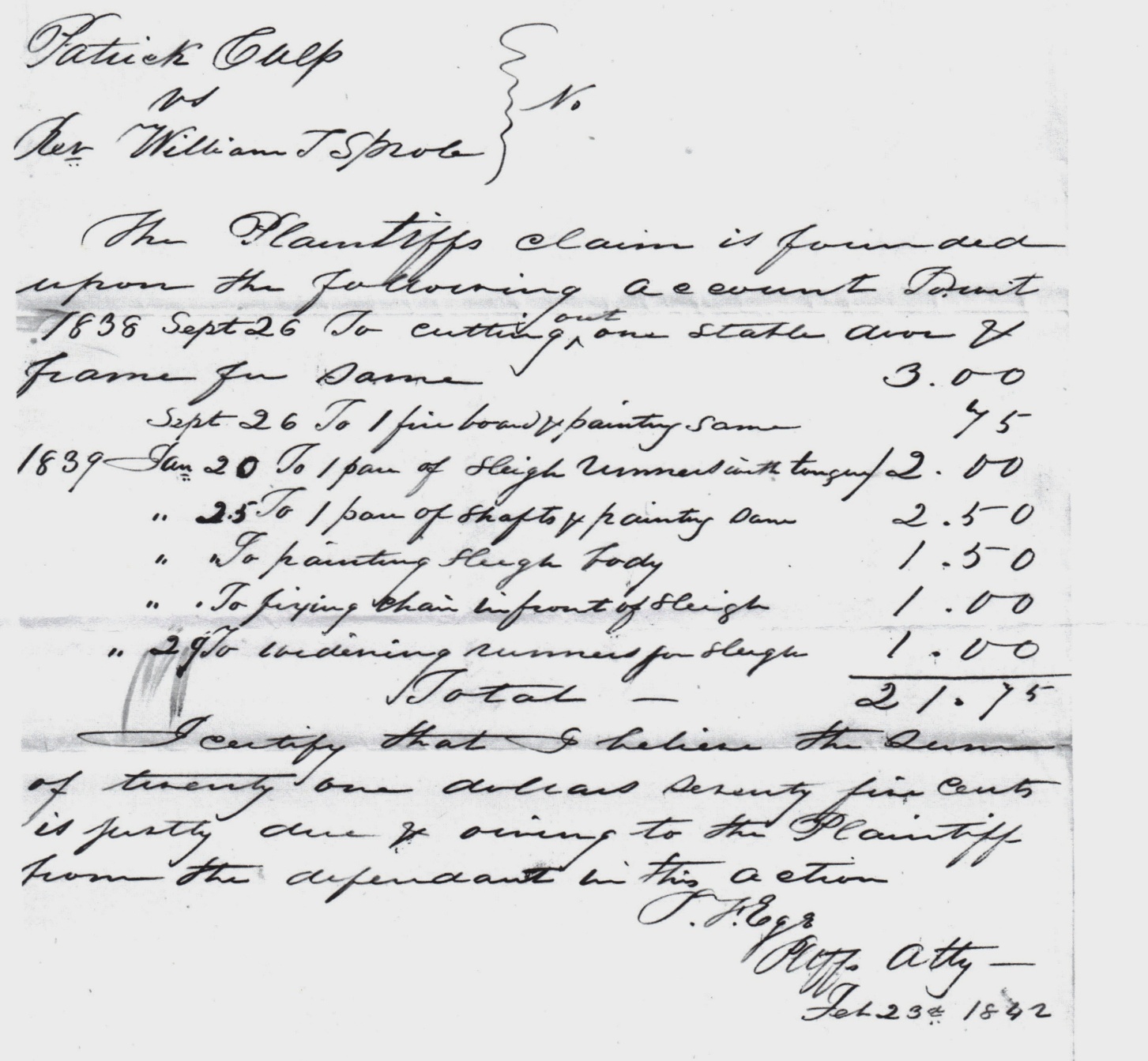Patrick Culp, a "mulatto," and the only documented African American cabinetmaker in Cumberland County, was born in Pennsylvania in 1790. A member of Allison United Methodist Church1 and later St. John’s Episcopal Church, he worked in Carlisle for 32 years before moving to Brooklyn, New York in 1855.
Culp did carpentry work as well as making furniture. When a new Episcopal Church was built in Carlisle, records show that Culp was paid in 1828, 1829 and 1830 for work in the church; especially work in the choir.2 Reminiscing about Carlisle in earlier days, J. H. Rheem remembered the old Episcopal Church and “the old colored man Culp as sexton.” He wrote that “Culp used to pump the organ and insist on singing bass with the choir to their discomfort as well as that of the congregation.”3
Culp lived in the East Ward of Carlisle. From 1830-1844 he owned part of Lot #238 on North Bedford Street, and he most likely had his cabinet shop there.4 In October 1834, Culp’s indentured apprentice, 19-year-old Augustus Lilly, ran off with 18-year-old John Shugart, another of Culp’s employees. Culp ran an advertisement offering a reward for Lilly’s return. The nineteen-year-old was described as 5’ 7” tall. He had a pair of keen black eyes, was somewhat freckled, walked remarkably erect, was missing two of his upper front teeth and “had a number of devices [tattoos] upon one of his hands and arms, among which was an eagle, all made with Indian ink.”5
Problems of a very different kind occurred with another of Culp’s apprentices. Between 8:00 and 10:00 on the night of January 12, 1836, Franklin Armstrong, a “boy of colour,” set fire to Culp’s shop (owned by James Noble) and also to the stable of cabinetmaker Edward Armor. Apprentice Armstrong also tried to burn Culp’s house by setting the window sash on fire, but the fire did not kindle. Armstrong confessed to setting the stable on fire but denied that he tried to set the house on fire.6
As a result of Culp suing Reverend William T. Sprole for his unpaid bill, it is revealed that Culp made a stable door and a fire board for Sprole in 1838, and in 1839 he made sleigh runners, shafts, and he painted the sleigh as well.7
In 1853, Samuel Elliott brought a judgment against Culp for a debt. An Inquisition was held and levied on Culp’s “lot of ground in Carlisle containing 60 feet in front by 120 feet in depth having thereon erected a two-story weather boarded house, a two-story shop, stable and other out houses.”8 The property was sold to Samuel Elliott on January 5, 1854 for $260.
Culp left Carlisle, and by 1859 he was living and working as a cabinetmaker in Brooklyn, New York.9 The 1864 Directory of Brooklyn lists “Patrick Culp (col.) cabinetmaker” at 164 S. 6th Street.10 The 1865 Census of New York records the household of Patrick Culp, a "mulatto" chairmaker, aged 75, born in Pennsylvania; his wife Annie M., aged 47, born in England; and three-year-old granddaughter Emily Watson, a "mulatto," born in Kings County, New York.11 Culp was 84-years old and still living in Brooklyn in 1875 along with his 34-year-old daughter Anna M. McKenzie and her 14-year-old daughter Emily McKenzie. Culp’s occupation was listed as “none,” and his birth place was given as Maryland.12 No death date or burial records have been found for Culp.


